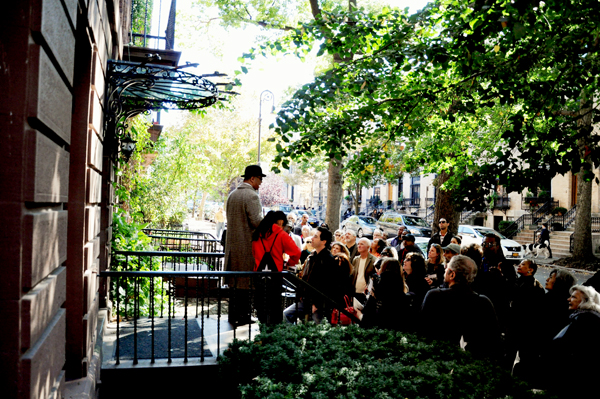 Sugar Hill is a historic district in the northern part of the Hamilton Heights section of Harlem in the New York City borough of Manhattan. Defined by 155th Street to the north, 145th Street to the south, Edgecombe Avenue to the east, and Amsterdam Avenue to the west, it gained its name in the 1920s when the locale became a popular place for wealthy African Americans to live during Harlem Renaissance.
Sugar Hill is a historic district in the northern part of the Hamilton Heights section of Harlem in the New York City borough of Manhattan. Defined by 155th Street to the north, 145th Street to the south, Edgecombe Avenue to the east, and Amsterdam Avenue to the west, it gained its name in the 1920s when the locale became a popular place for wealthy African Americans to live during Harlem Renaissance.
Reflective of the “sweet life” there, Sugar Hill featured rowhouses for such prominent African Americans as W. E. B. Du Bois, Thurgood Marshall, Adam Clayton Powell Jr., and Duke Ellington. Langston Hughes wrote about its relative affluence in his essay “Down and Under in Harlem” published in The New Republic in 1944:
“If you are white and are reading this vignette, don’t take it for granted that all Harlem is a slum. It isn’t. There are big apartment houses up on the hill, Sugar Hill, and up by City College — nice high-rent-houses with elevators and doormen, where Canada Lee lives, and W. C. Handy, and the George S. Schuylers, and the Walter Whites, where colored families send their babies to private kindergartens and their youngsters to Ethical Culture School.”
Sugar Hill was made a municipal historic district by the New York City Landmarks Preservation Commission in 2000 and listed on the National Register of Historic Places in 2002. The District has 414 contributing buildings, two contributing sites, three contributing structures, and one contributing object.
Sugar Hill is mentioned in the lyrics to the jazz standard “Take the A Train” by Billy Strayhorn. It is also referred to by rapper AZ’s “Sugar Hill” on his album Doe or Die. Henry Allen, Jr. (commonly known as Henry Red Allen) recorded “Sugar Hill Function” (written by Charlie Holmnes) on February 18, 1930. There is also a song by Rex Stewart and his Fifty-Second Street Stompers (one of the four Duke Ellington small groups) called “Sugar Hill Shim-Sham” recorded on July 7, 1937.
An award-winning 2012 memoir by author Terry Mulligan, “Sugar Hill, Where the Sun Rose Over Harlem,” is a chronicle of the writer’s experiences growing up in the 1950s and ’60s in the famous neighborhood, where her neighbors included future US Supreme Court Justice Thurgood Marshall, early rock n’ roll legend Frankie Lymon, and New York Baseball great Willie Mays, among other well-known names.
Become a Harlem Insider!
By submitting this form, you are consenting to receive marketing emails from: . You can revoke your consent to receive emails at any time by using the SafeUnsubscribe® link, found at the bottom of every email. Emails are serviced by Constant Contact








